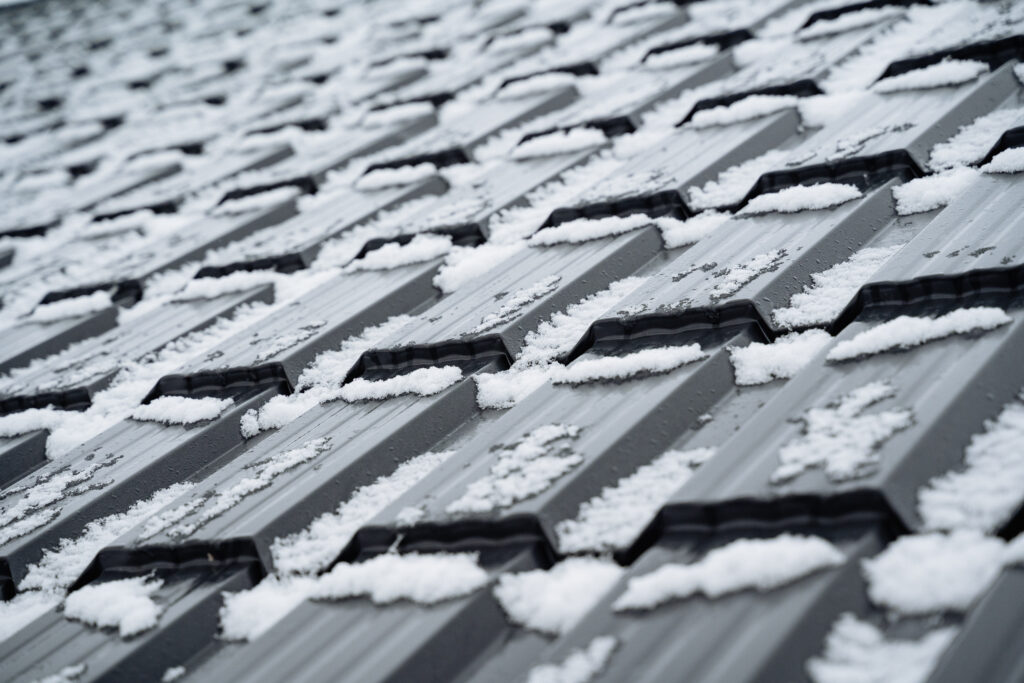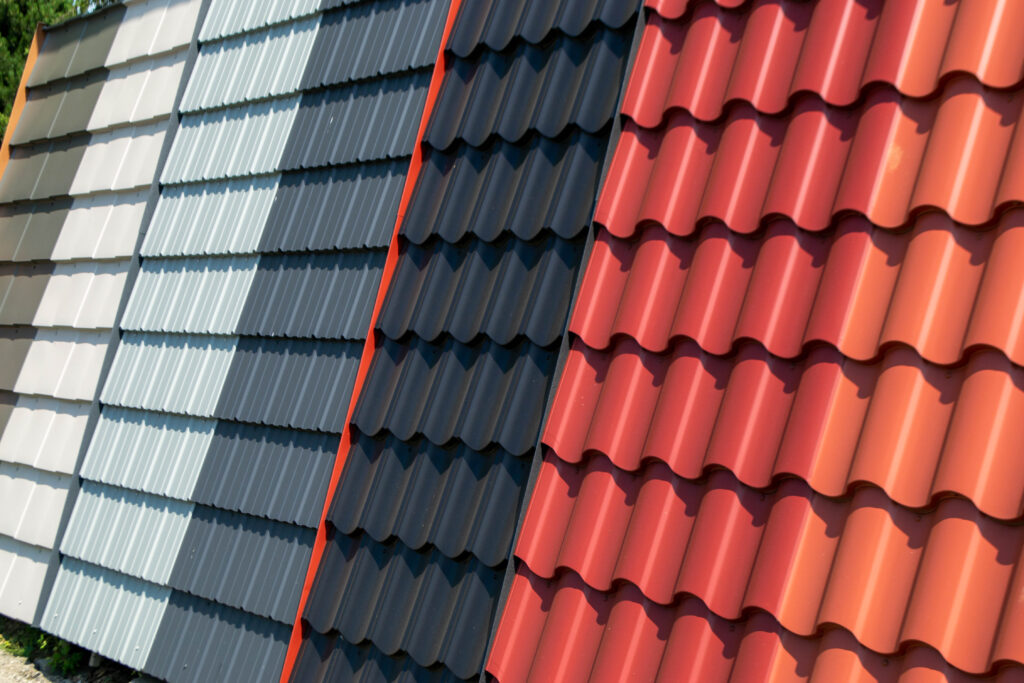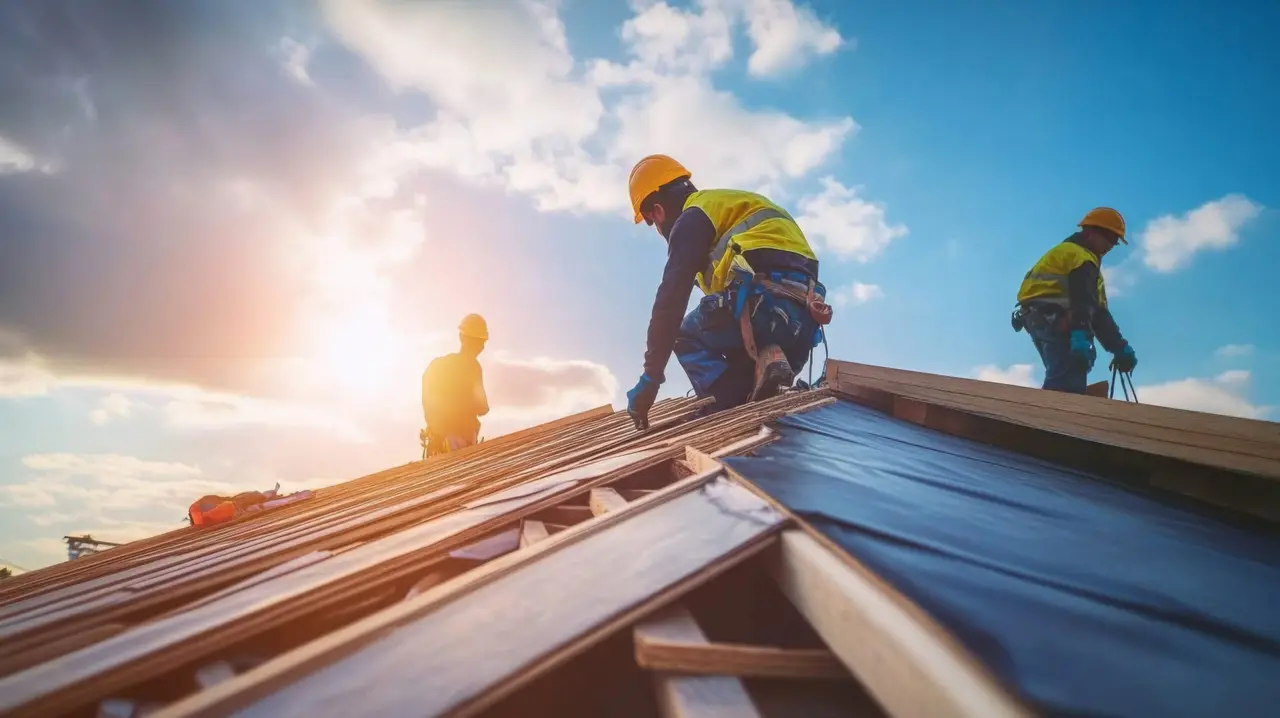A severe hail storm can unleash significant force upon your home, and often, the first casualty is your roof. Experiencing hail damage roof issues can be incredibly stressful for property owners, leading to concerns about property damage and the challenging prospect of repairs. This guide, created with insights from Roof Rescue, will help you understand the full scope of hail damage to your roof, covering everything from initial detection to the final steps of getting your roof repaired.
We’ll explore how hail impacts different roofing materials, what to do immediately after a storm, and how to work with your insurance company for a successful insurance claim. Understanding these aspects is crucial for handling hail effectively. Whether you have asphalt shingles, a metal roof, or wood shingles, this information will be valuable for protecting your investment.
Table of Contents:
- What Does Hail Damage Look Like on a Roof?
- The Impact of Hail Size on Roof Damage
- Types of Roofing Materials and Their Hail Resistance
- Steps to Take After a Hailstorm
- The Importance of Professional Inspection
- Hail Damage Roof Repair Options
- The Cost of Hail Damage Repairs
- Dealing with Insurance for Hail Damage
- Preventing Future Hail Damage
- Conclusion
What Does Hail Damage Look Like on a Roof?

Identifying hail damage isn’t always straightforward, particularly when viewing your roof from the ground. Subtle signs of a hail damaged roof can easily be missed, but knowing what to look for is the first step in addressing potential problems. Different roofing materials will show hail impacts differently depending on their composition and the severity of the hail hit.
Here are some common indicators that your roof may have suffered hail damage:
- Dents, dings, or dimples are frequently seen on metal components of the roof. This includes metal flashing, roof vents, metal fixtures, and even dented gutters. The size and depth of these impact marks can indicate the size hail that fell.
- Cracked shingles or missing shingles are more obvious signs of damage. Hail can cause shingles to break, especially if they are older or were already weathered. High winds accompanying a hail storm can also lift and remove shingles.
- Shiny spots or bare spots on asphalt shingles or composition shingles indicate granule loss. These granules protect the underlying asphalt from UV rays and weathering; their absence means the shingle damage will accelerate, shortening the roof’s lifespan. Look for an accumulation of granules asphalt in your gutters or downspouts.
- Soft spots or bruising on asphalt composition shingles can feel like a soft area on an apple. This bruising, often a result of hard hail, compromises the shingle’s integrity even if no granules are immediately lost, potentially leading to future roof leaks.
Beyond the shingles themselves, inspect other areas around your property. Check window screens for tears or holes, and look for damage to vinyl siding. Broken windows are a clear sign of severe hail, and if they are damaged, your roof likely is too.
The wind direction and wind speed during the storm also play a significant role in the pattern and severity of the roof damage caused. Damage might be concentrated on one slope of the roof if the wind was strong from a particular direction. A weakened seal on shingles can also be a consequence, making them more susceptible to future wind and water damage.
If you suspect roof damage after a hail event, it’s critical to investigate further. Even small, seemingly insignificant damage can escalate into larger problems like water damage if not addressed promptly. When in doubt, contact a local expert like Roof Rescue for an inspection.
The Impact of Hail Size on Roof Damage
Not all hail is created equal, and the hail size directly correlates with the potential for roof damage. Even hail that seems small can cause issues, especially when driven by high winds. Larger hailstones dramatically increase the risk of severe damage to your roofing material.
Understanding how different sizes of hail impact roof structures helps property owners assess risk after a storm. The force of a hail impact is significant, and larger, harder hail can be particularly destructive. Here’s a more detailed look at what different hail sizes can mean for your roof:
| Hail Size | Common Description | Potential Roof Damage and Other Impacts |
|---|---|---|
| Pea-sized (1/4 inch) | Small, generally non-damaging | Usually cosmetic, though granule loss may occur with extended exposure. |
| Marble-sized (1/2 inch) | Small to moderate | Can cause minor shingle wear and dent soft metal flashing or vents. |
| Quarter-sized (1 inch) | Moderate, often damaging | May bruise or crack shingles, dent gutters, and break wood shingles. |
| Golf ball-sized (1.75 inches) | Large and damaging | Expect widespread damage: cracked shingles, dented metal, damaged siding. |
| Tennis ball-sized (2.5+ inches) | Very large and destructive | Severe structural and roofing damage is common. Contact Roof Rescue immediately if this type of hail hits your area. |
Factors like wind speed, density of the hail, and roof age also affect damage severity. Professionals like Roof Rescue can help assess the unique impact on your roof and recommend the next steps.
Types of Roofing Materials and Their Hail Resistance

The type of roofing material on your home significantly influences its ability to withstand a hail storm. Some materials are inherently more resilient to hail impacts, while others may sustain considerable damage even from smaller hail. Understanding these differences is crucial for property owners when choosing a new roof or assessing existing hail roof damage.
Here’s a closer look at common roofing materials and how they generally perform against hail:
- Asphalt Shingles: These are the most common roofing material due to their affordability and ease of installation. Standard asphalt shingles, including many composition shingles, offer moderate hail resistance. Hail impacts can cause granule loss, cracking, or bruising. Impact-resistant shingles offer better protection.
- Metal Roofing: Metal roofs like steel or aluminum are durable and typically withstand hail well. Large hail may dent the surface, but penetration is rare. Roof Rescue often recommends heavier gauge metal for enhanced resilience.
- Slate Roofing: Natural slate is durable and attractive, but large, hard hail can crack or shatter individual tiles. Slate is best suited for areas with low hail risk or with additional protective measures.
- Wood Shingles/Shakes: While cedar shakes can absorb some impact, older or brittle wood can split from hail. It’s important to have a pro like Roof Rescue inspect after any storm.
- Composition Shingles: These vary widely in performance. Some mimic the look of other materials but offer varying impact resistance. Always look for Class 4 ratings if hail is a concern.
Regardless of material, a professional inspection—especially by a local company like Roof Rescue—can reveal the extent of damage and help you make a plan.
Steps to Take After a Hailstorm
Prompt action after a hail storm is critical. Here’s a proven plan, recommended by Roof Rescue:
- Ensure your safety. Avoid going outside until it’s safe. Watch for downed power lines and debris.
- Perform a visual inspection from the ground. Look for missing shingles, broken siding, or dented gutters.
- Check your attic and ceilings. Look for leaks or water stains.
- Document everything. Take photos of all visible damage, including hailstones if possible.
- Call a reputable contractor like Roof Rescue. They’ll inspect safely and thoroughly and help you navigate next steps.
- Protect your property. If there’s active leaking, use tarps only if safe—or let professionals handle it.
Never walk on a roof after a hailstorm. It may be unstable or slippery. Leave it to trained pros like those at Roof Rescue.
The Importance of Professional Inspection
Some hail damage is easy to miss. That’s why a thorough inspection by experienced pros like Roof Rescue is vital. They can:
- Access the roof safely and completely.
- Spot hidden issues like bruising or compromised underlayment.
- Provide photo-documented reports for your insurance claim.
- Recommend whether repair or replacement is more cost-effective.
- Ensure repairs meet local codes.
Roof Rescue offers free roof inspections following hail events and has years of experience helping local homeowners restore their homes.
Hail Damage Roof Repair Options
Once hail roof damage has been confirmed by a professional inspection, the next step is to determine the appropriate repair options. The best course of action depends on the extent of the damage, your roofing material, and insurance coverage. A trusted local expert like Roof Rescue can guide you through your choices:
- Spot Repairs: If damage is minor and localized, Roof Rescue can replace individual shingles or repair small areas of flashing, vents, or gutters.
- Partial Re-Roofing: For more extensive but concentrated damage, partial re-roofing might be a solution. Roof Rescue works to match materials and maintain roof integrity.
- Full Roof Replacement: When damage is widespread, a full replacement is often the best investment. Roof Rescue can help you choose durable materials and ensure a warranty-backed installation.
Minor damage can mask deeper issues. That’s why Roof Rescue always recommends a thorough inspection before making repair decisions.
The Cost of Hail Damage Repairs
Repair costs vary based on roof size, damage extent, materials, and labor rates. Here’s a general breakdown:
- Minor Repairs: $300 – $1,500
- Moderate Repairs: $1,500 – $5,000
- Full Replacement: $5,000 – $20,000+
Additional factors include roof pitch, material cost (metal vs. asphalt), underlayment damage, and disposal fees. Roof Rescue provides free estimates and works directly with insurance adjusters to ensure accurate coverage.
Be wary of unusually low bids—they often indicate subpar workmanship or materials. Stick with licensed and insured contractors like Roof Rescue to ensure your home is protected.
Dealing with Insurance for Hail Damage

Most homeowners insurance policies cover hail damage. Here’s how to navigate the claims process with help from Roof Rescue:
- Review your policy: Understand deductibles, coverage limits, and exclusions.
- Report damage promptly: Many insurers have time limits for claims. Provide photos and documentation.
- Schedule a professional inspection: Roof Rescue will provide a detailed report and photos to support your claim.
- Be present during adjuster inspection: Roof Rescue can accompany the adjuster to ensure nothing is missed.
- Understand your estimate: If the insurer’s payout is lower than expected, Roof Rescue can help you challenge or clarify discrepancies.
In complex cases or disputes, consider hiring a public adjuster. Roof Rescue can connect you with trusted professionals if needed.
Preventing Future Hail Damage
While hail can’t be avoided, there are steps you can take to reduce risk:
- Install impact-resistant shingles: Class 4 materials withstand hail better and may lower insurance premiums. Roof Rescue can help you choose the right product.
- Schedule regular roof maintenance: Annual inspections help catch and fix issues before storms hit.
- Trim nearby trees:Prevent limbs from falling during storms and damaging your roof.
- Upgrade vents and flashing: More durable components help protect vulnerable areas.
- Protect outdoor units: Install hail guards over HVAC units and skylights.
Ask Roof Rescue about a hail preparedness assessment if you live in a storm-prone area.
Conclusion
Dealing with hail damage can be overwhelming—but you don’t have to go it alone. With expert guidance from a trusted local contractor like Roof Rescue, you can confidently assess damage, file insurance claims, and repair or replace your roof with peace of mind.
Your roof is your home’s first line of defense. Don’t ignore even minor signs of damage. A professional inspection today could save you thousands tomorrow.
Ready to schedule your free hail damage inspection? Contact Roof Rescue today and get the clarity you need to move forward.
Mark Franklin, owner of Roof Rescue in Idaho Falls, Idaho, has been a trusted name in roofing since 2014. Serving Idaho, Montana, Wyoming, and Utah, Roof Rescue specializes in commercial and residential roof replacement and installation. Recognized for community initiatives like the “Operation Roof Rescue” program, which provides free roofs to local heroes, Mark combines professionalism with a passion for giving back. With 16 years of industry experience, an A+ Better Business Bureau rating, and glowing customer reviews, Mark’s leadership embodies quality and community-focused service.



